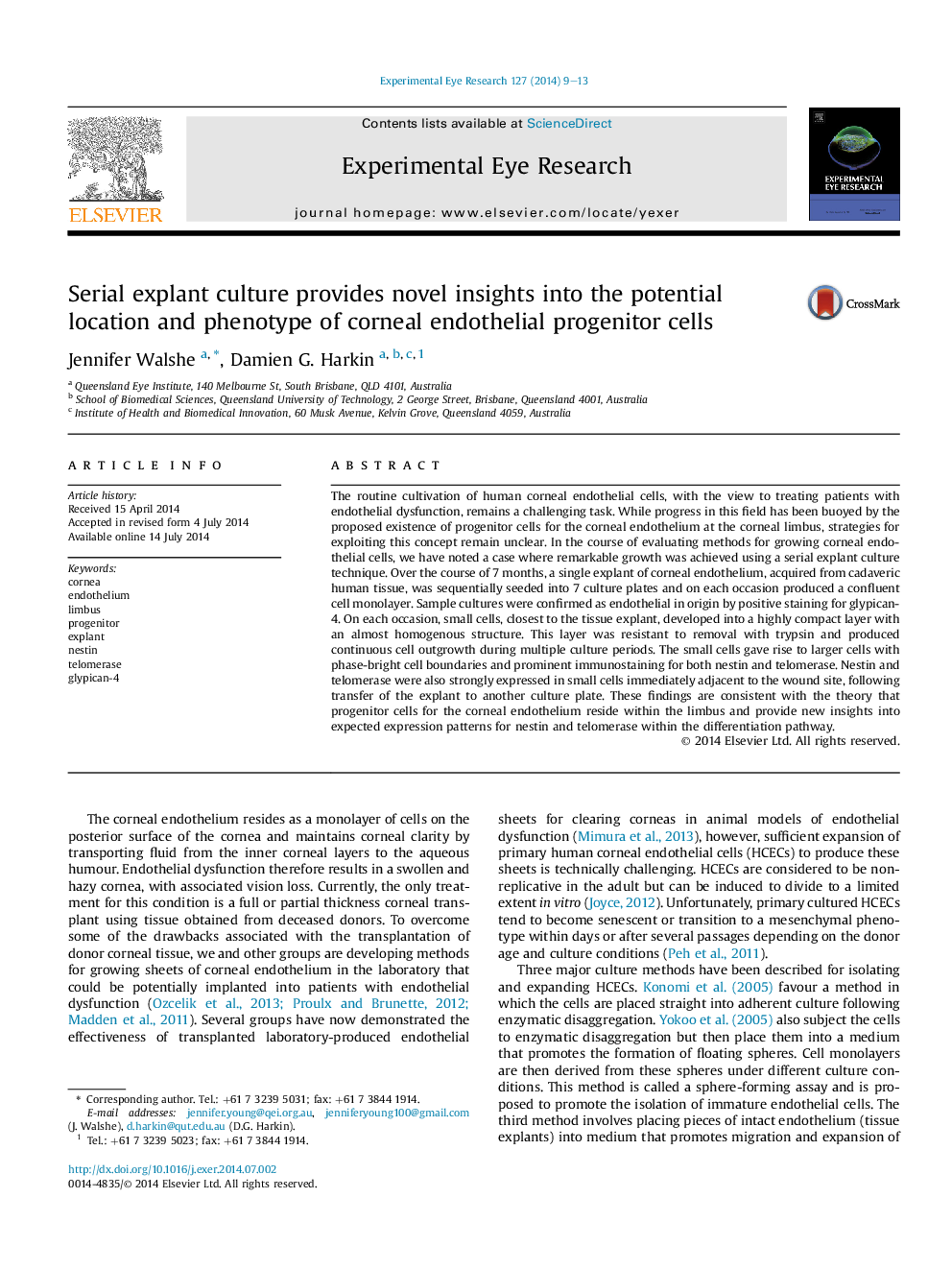| کد مقاله | کد نشریه | سال انتشار | مقاله انگلیسی | نسخه تمام متن |
|---|---|---|---|---|
| 6196831 | 1602595 | 2014 | 5 صفحه PDF | دانلود رایگان |
- Serial explant method used for growing human corneal endothelial cells.
- The corneal endothelium explant produced cells with progenitor characteristics.
- Wounded corneal endothelial cells upregulated nestin and telomerase expression.
- Potential features of adult corneal endothelial progenitor cells are discussed.
The routine cultivation of human corneal endothelial cells, with the view to treating patients with endothelial dysfunction, remains a challenging task. While progress in this field has been buoyed by the proposed existence of progenitor cells for the corneal endothelium at the corneal limbus, strategies for exploiting this concept remain unclear. In the course of evaluating methods for growing corneal endothelial cells, we have noted a case where remarkable growth was achieved using a serial explant culture technique. Over the course of 7 months, a single explant of corneal endothelium, acquired from cadaveric human tissue, was sequentially seeded into 7 culture plates and on each occasion produced a confluent cell monolayer. Sample cultures were confirmed as endothelial in origin by positive staining for glypican-4. On each occasion, small cells, closest to the tissue explant, developed into a highly compact layer with an almost homogenous structure. This layer was resistant to removal with trypsin and produced continuous cell outgrowth during multiple culture periods. The small cells gave rise to larger cells with phase-bright cell boundaries and prominent immunostaining for both nestin and telomerase. Nestin and telomerase were also strongly expressed in small cells immediately adjacent to the wound site, following transfer of the explant to another culture plate. These findings are consistent with the theory that progenitor cells for the corneal endothelium reside within the limbus and provide new insights into expected expression patterns for nestin and telomerase within the differentiation pathway.
Journal: Experimental Eye Research - Volume 127, October 2014, Pages 9-13
